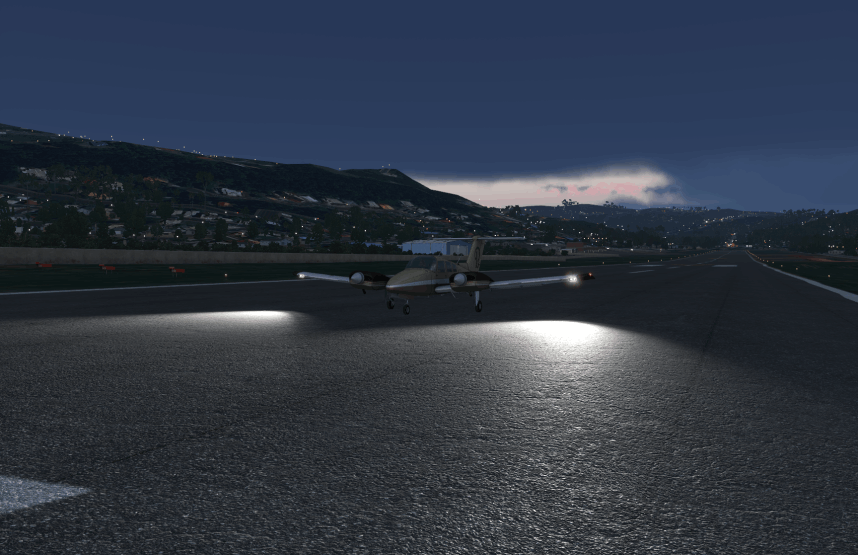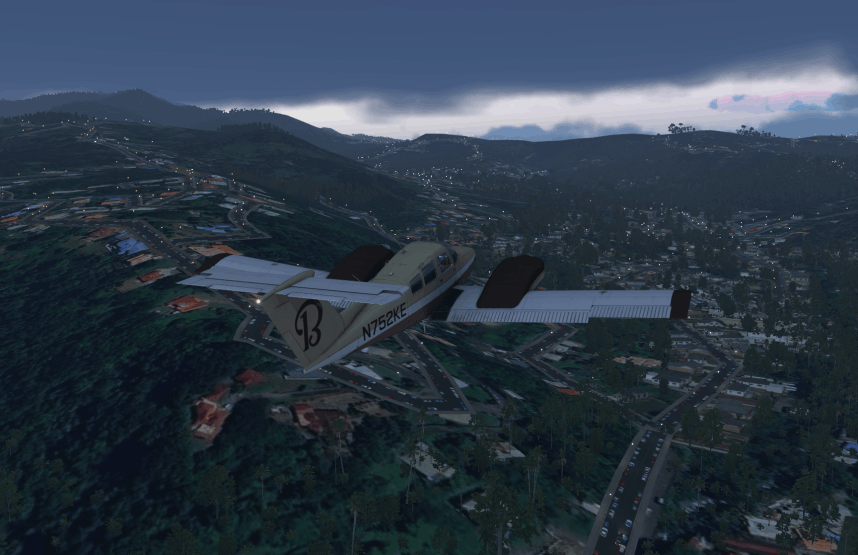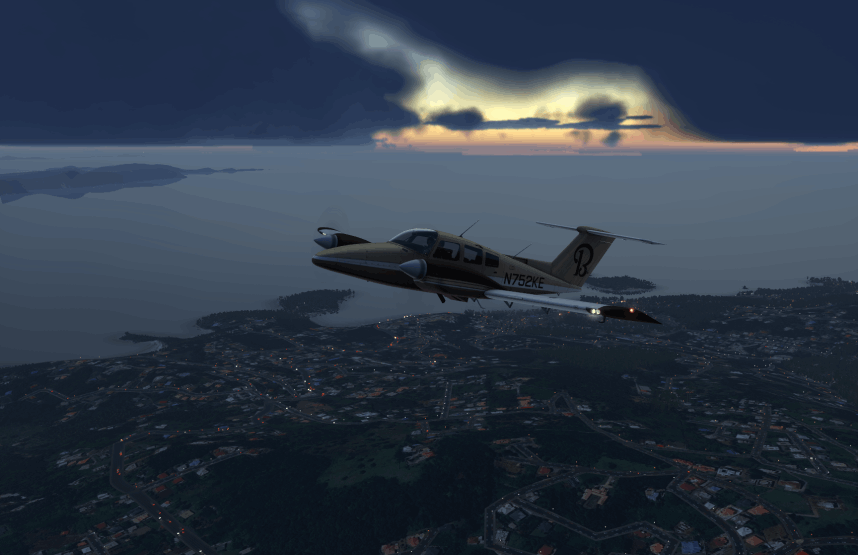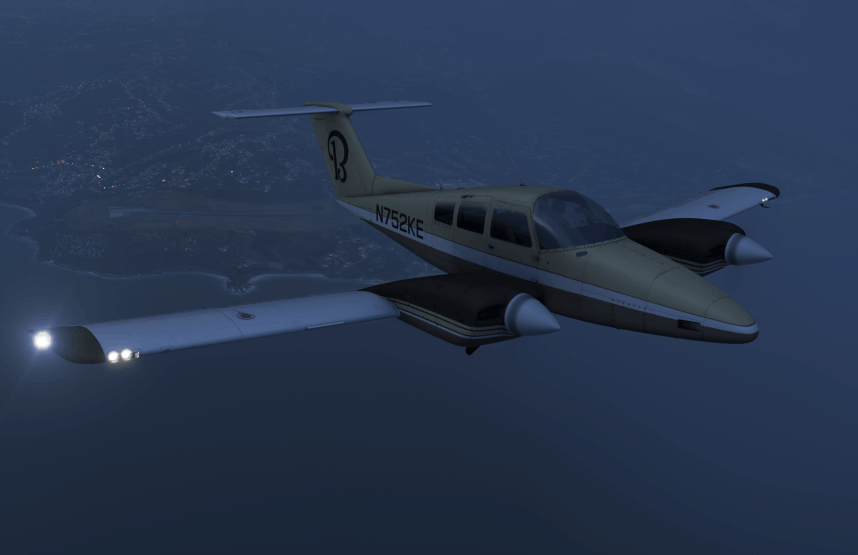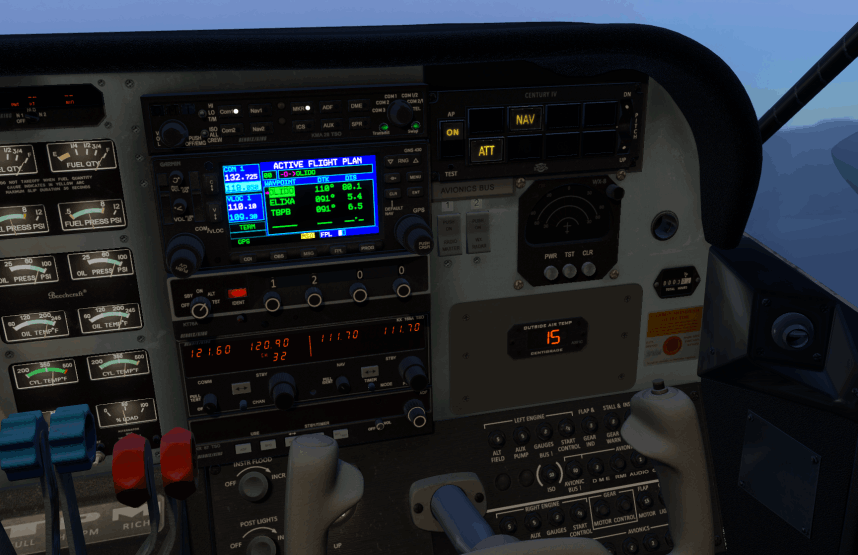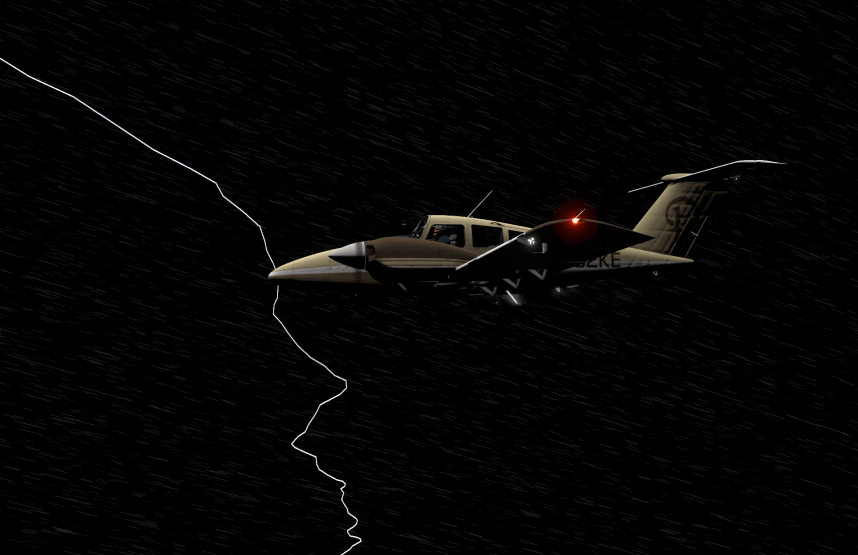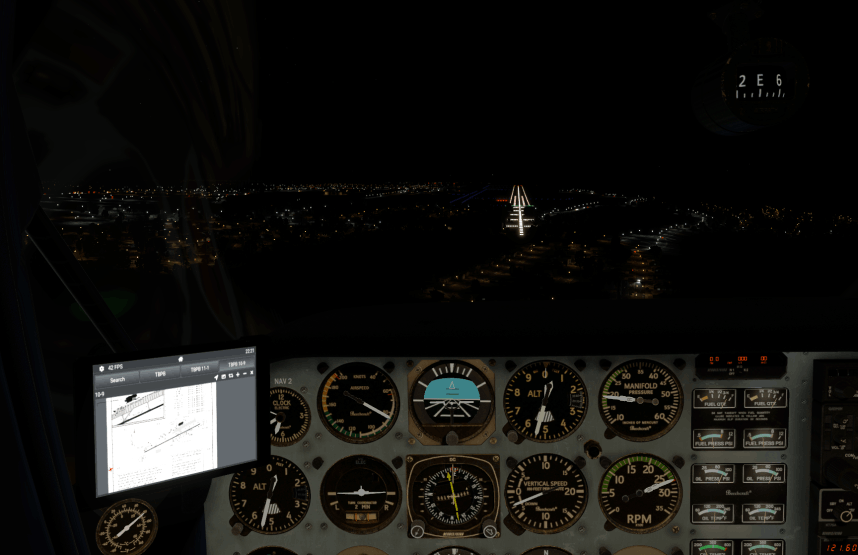
I recall the sailors warning of a red sky...
I suppose you could say that Wanda and I have been spoiled over the past month with pretty great weather. Sure, we've seen some rain, but the visibility has always been good, the winds relatively light and the flying nearly all VFR. Well, tonight is a different story.
Over the past several days Wanda and I have been ferrying passengers back and forth between Canouan and St. Vincent as a way to fatten our wallet in case we run out of paying jobs along the way. The flights have been easy - 15 minutes down, drop passengers, 15 minutes to get back, drop passengers, get paid, repeat. We flew a total of 9 legs, earning $8,683.20 in FSEconomy net profit. Ready to continue on the tour, I mentioned to the FBO manager my plans to next fly to Barbados. Hearing this, he asked if I would like to depart tonight with a full load of passengers and a box that needed to get to Barbados before midnight. (don't ask me why because I don't know). I saw the weather briefing a couple hours ago and had made the decision to fly to Barbados tomorrow due to a nasty storm front moving through the area. Well aware of the dangers of 'get-there-itis', I also realized that a flight tonight would really test my IFR night skills, which haven't been exercised lately. While the forecast in Barbados calls for thunder, lightning and rain, the winds are pretty calm, so why not?
"Sure, I can fly to Barbados tonight" I said.










